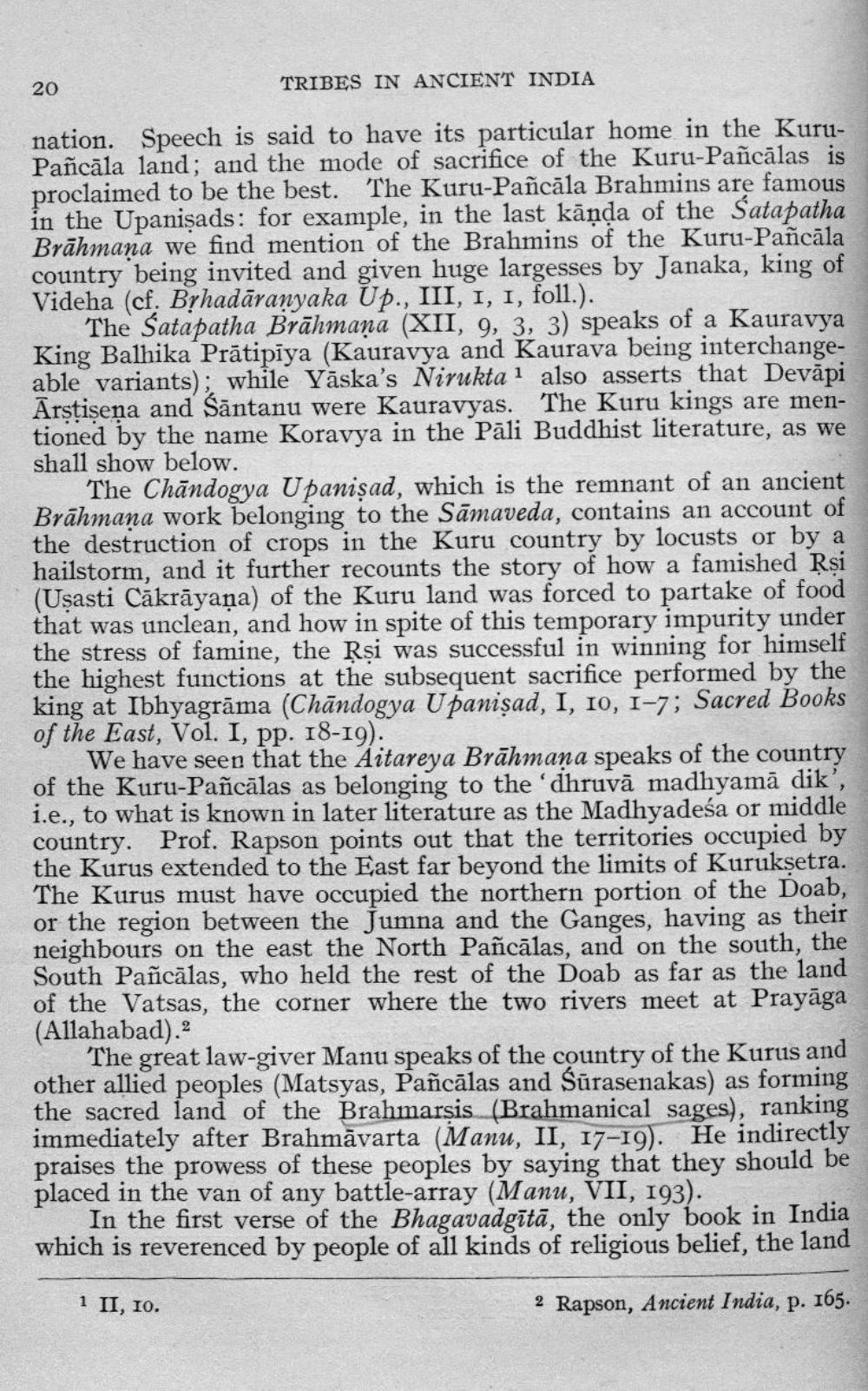________________
20
TRIBES IN ANCIENT INDIA
nation. Speech is said to have its particular home in the KuruPañcāla land; and the mode of sacrifice of the Kuru-Pañcālas is proclaimed to be the best. The Kuru-Pañcāla Brahmins are famous in the Upanişads: for example, in the last kāņda of the Satapatha Brāhmaṇa we find mention of the Brahmins of the Kuru-Pañcāla country being invited and given huge largesses by Janaka, king of Videha (cf. Brhadāranyaka Up., III, 1, 1, foll.).
The Satapatha Brāhmana (XII, 9, 3, 3) speaks of a Kauravya King Balhika Prātipīya (Kauravya and Kaurava being interchangeable variants); while Yāska's Nirukta 1 also asserts that Devāpi Ārstisena and Sāntanu were Kauravyas. The Kuru kings are mentioned by the name Koravya in the Pāli Buddhist literature, as we shall show below.
The Chāndogya Upanisad, which is the remnant of an ancient Brāhmaṇa work belonging to the Sāmaveda, contains an account of the destruction of crops in the Kuru country by locusts or by a hailstorm, and it further recounts the story of how a famished Rsi (Uşasti Cākrāyaṇa) of the Kuru land was forced to partake of food that was unclean, and how in spite of this temporary impurity under the stress of famine, the Rși was successful in winning for himself the highest functions at the subsequent sacrifice performed by the king at Ibhyagrāma (Chāndogya Upanişad, I, 10, 1-7; Sacred Books of the East, Vol. I, pp. 18-19).
We have seen that the Aitareya Brāhmana speaks of the country of the Kuru-Pañcālas as belonging to the 'dhruvā madhyamā dik', i.e., to what is known in later literature as the Madhvadesa or country. Prof. Rapson points out that the territories occupied by the Kurus extended to the East far beyond the limits of Kuruksetra. The Kurus must have occupied the northern portion of the Doab, or the region between the Jumna and the Ganges, having as their neighbours on the east the North Pañcālas, and on the south, the South Pañcālas, who held the rest of the Doab as far as the land of the Vatsas, the corner where the two rivers meet at Prayāga (Allahabad).2
The great law-giver Manu speaks of the country of the Kurus and other allied peoples (Matsyas, Pañcālas and Sūrasenakas) as forming the sacred land of the Brahmarsis (Brahmanical sages), ranking immediately after Brahmāvarta (Manu, II, 17-19). He indirectly praises the prowess of these peoples by saying that they should be placed in the van of any battle-array (Manu, VII, 193).
In the first verse of the Bhagavadgītā, the only book in India which is reverenced by people of all kinds of religious belief, the land
1 II, IO.
2 Rapson, Ancient India, p. 165.




